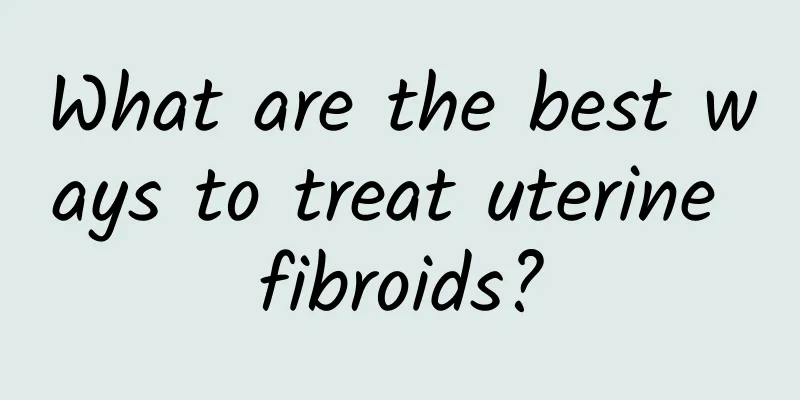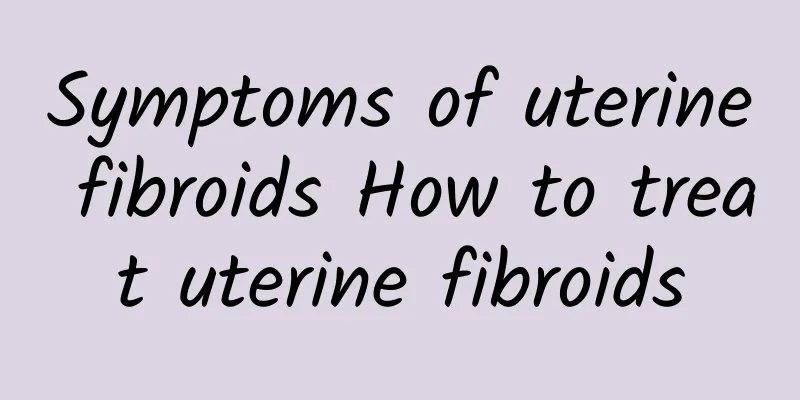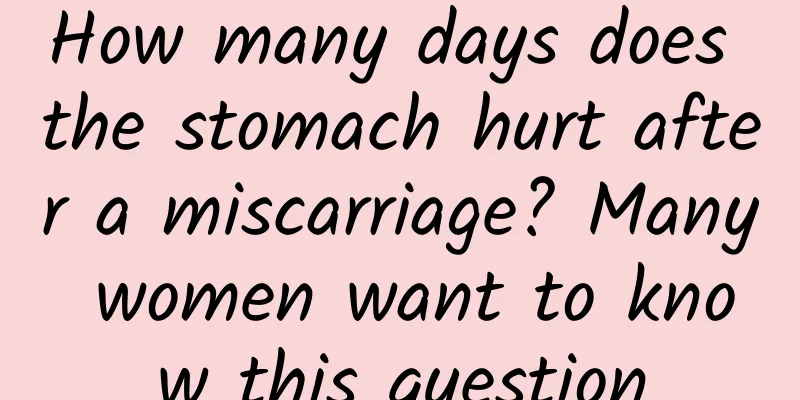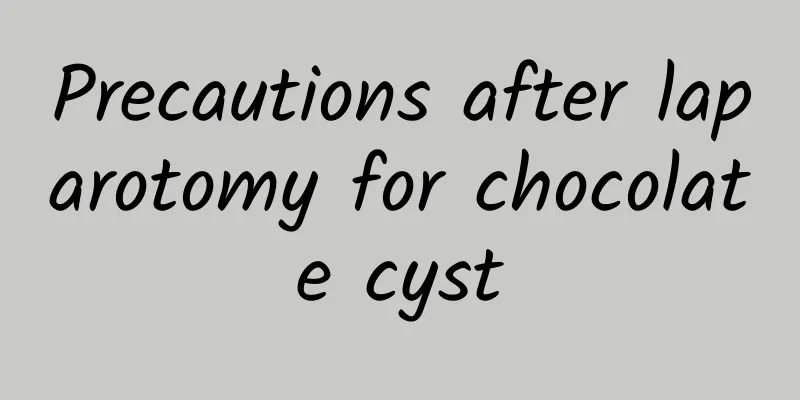What are the best ways to treat uterine fibroids?

|
Uterine fibroids are one of the most common gynecological tumors, but they are becoming younger and younger. The current incidence rate is about 20%-40%, and it is more common in women aged 30-50. If uterine fibroids are not treated scientifically, they can easily cause severe anemia and infertility, and in severe cases, they can even become cancerous and endanger life. So, what are the best ways to treat uterine fibroids? 1. Drug treatment Traditional Chinese medicine treatment: Traditional Chinese medicine treatment of uterine fibroids is mainly based on promoting blood circulation and removing blood stasis, removing blood stasis and dispersing knots, clearing away heat and detoxification, soothing the liver and regulating qi, and removing blood stasis and relieving pain. However, in the long-term treatment of traditional Chinese medicine, the growth rate of uterine fibroids cannot be controlled to 0. There are also cases of recovery after treatment with traditional Chinese medicine in domestic and foreign cases and data, but they are rare. Hormone therapy: Depending on the patient's specific situation, pseudo-pregnancy therapy can be used periodically or continuously to degenerate and soften the fibroids. However, it can cause tumor enlargement and irregular uterine bleeding, so it is not suitable for long-term use. Furthermore, hormones have great side effects on female patients (coarsening of the voice, vigorous growth of hair, obesity, strong dependence, etc.), long medication cycles, and high drug prices, which are feared by most patients. 2. Interventional Therapy Interventional therapy is to block blood vessels to cause ischemia and hypoxia of fibroids to lead to necrosis. Studies have found that more than 95% of uterine fibroids have abundant blood supply, which has a good effect on interventional therapy. However, uterine fibroid necrosis often occurs with varying degrees of normal uterine tissue necrosis, or incomplete necrosis of uterine fibroids leads to recurrence, which is also supported by domestic and foreign cases and data. This treatment method cannot eradicate the root cause and has a high recurrence rate. 3. Radiation therapy It is suitable for patients who are ineffective with drug treatment and have contraindications to surgical treatment or refuse surgical treatment. However, radiotherapy kills normal tissue cells while killing fibroid cells. In addition, radiotherapy can cause temporary or permanent amenorrhea and is not suitable for the following groups: young patients under 40 years old; patients with inflammatory symptoms; patients with large uterine fibroids; patients with cancer; pregnant patients, etc. 4. Surgical treatment Hysterectomy: Suitable for patients with a uterus larger than the size of a 3-month pregnancy, or with a rapidly growing fibroid that cannot be ruled out as malignant. Total hysterectomy is generally recommended, especially for patients with severe cervical hypertrophy, lacerations or erosions. However, if the patient is in poor general condition and the technical conditions are limited, only a subtotal hysterectomy can be performed, with a cancer recurrence rate of about 4%. However, regular checkups are still recommended after surgery. Myomectomy: Suitable for patients under 35 years old, unmarried, or childless. However, care should be taken after surgery: those who have not become pregnant should practice contraception for 1 to 2 years; future pregnancies should be alert to uterine rupture and placenta implantation, and selective cesarean section should be performed at full term. Myomectomy may recur after surgery, so regular check-ups are recommended. |
<<: Female sanitary pads affect cervical erosion
>>: Symptoms of atrophic and hyperplastic vulvar leukoplakia are different
Recommend
Can drinking ice water help you lose weight? Or become obese? Wu Mingzhu: Menstrual pain and constipation have four major disadvantages that cannot be avoided
Eating ice and drinking ice water in summer can m...
How to take care of yourself after abortion surgery
Although abortion surgery is not very dangerous, ...
Is eating salad to lose weight the right way? 3 tips to ensure balanced nutrition
Do you think salad means lettuce? In fact, in add...
Is viral cervical erosion contagious?
Some women are completely unaware of their cervic...
How to Treat Ovarian Cysts
How are ovarian cysts treated? The first thing th...
What are the basic types of ovarian cysts?
What are the basic types of ovarian cysts? Ovaria...
What is the reason for lower back pain when menstruation is delayed for 10 days?
What is the reason for lower back pain when menst...
Knowing the classification of vaginitis can help you judge the condition well.
Medical evidence shows that vaginitis is a common...
How long does it take to detect an ectopic pregnancy using a test strip?
How long does it take to detect an ectopic pregna...
How to cure female cervical erosion? Introduction of three methods to cure cervical erosion
Cervical erosion is a common gynecological diseas...
Dietary regulation for women with irregular menstruation
Long-term irregular menstruation is extremely har...
Briefly summarize several methods of treating vaginitis
At present, the incidence of vaginitis is increas...
What is the reason for abdominal bloating after abortion? Is the bloating in the lower abdomen caused by adhesion?
Abortion is a common gynecological surgery. It is...
Say goodbye to fat legs and buttocks! Chinese medicine doctors teach you 3 secrets to KO lower body obesity
"Hey, why can't I pull it up?" The ...
Can you lose weight by eating vegetarian food? The cooking method is the key
The old fat that has been accumulated in the body...









